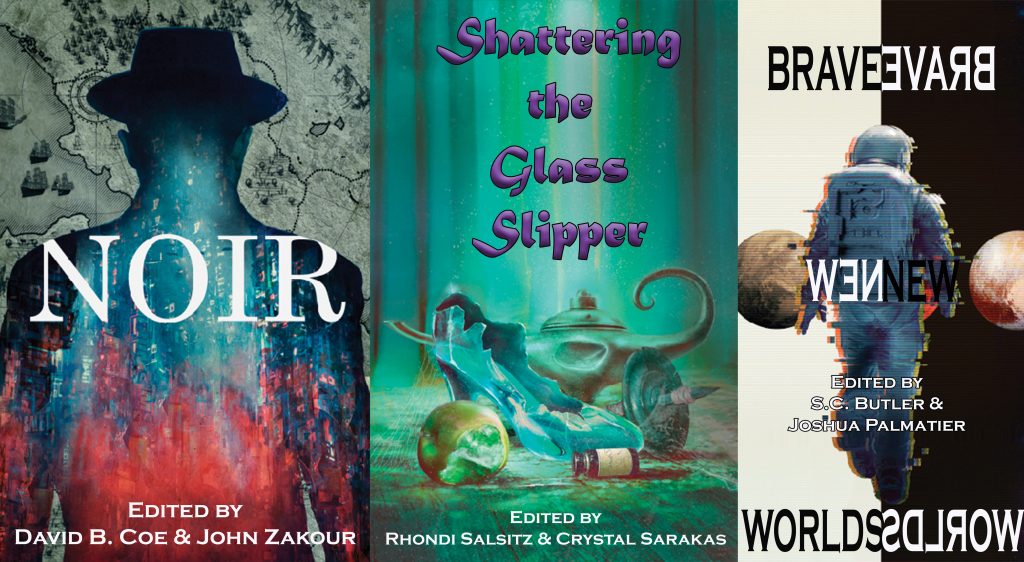 As many of you know, I am once again co-editing an anthology for Zombies Need Brains, Joshua Palmatier’s speculative fiction imprint. This is my fourth year as a co-editor, and each year Joshua follows pretty much the same approach to publishing his themed anthologies. Each collection has about fourteen story slots. He chooses a set of eight or so anchor authors for each volume and runs a Kickstarter to fund all the anthologies, using those anchor author names to attract support for the projects. Once the anthologies have funded (and Joshua has a remarkable success rate with his Kickstarters) he throws open the anthologies for general submissions, having reserved six story slots in each collection for non-anchor stories. He pays professional rates for the stories, and he puts out sleek, well-curated, well-edited books.
As many of you know, I am once again co-editing an anthology for Zombies Need Brains, Joshua Palmatier’s speculative fiction imprint. This is my fourth year as a co-editor, and each year Joshua follows pretty much the same approach to publishing his themed anthologies. Each collection has about fourteen story slots. He chooses a set of eight or so anchor authors for each volume and runs a Kickstarter to fund all the anthologies, using those anchor author names to attract support for the projects. Once the anthologies have funded (and Joshua has a remarkable success rate with his Kickstarters) he throws open the anthologies for general submissions, having reserved six story slots in each collection for non-anchor stories. He pays professional rates for the stories, and he puts out sleek, well-curated, well-edited books.
This year the three anthologies are Shattering the Glass Slipper, Brave New Worlds, and my anthology, Noir. Joshua is co-editing only one of the anthologies, a bit of a change from past years when he has nearly killed himself editing two or even all three of the books. We get literally hundreds of submissions for each anthology, making the selection of six (or five or seven) stories incredibly difficult.
As the publisher, Joshua takes it upon himself to send out acceptance letters and also rejections. Of course, he also handles the contracts and payments. His is a somewhat thankless job.
Most years, the rejection letters are met with either silence from the rejected authors, or, on occasion, with a “Thanks for considering me, maybe next time” note in return. This year was much the same. Except for one note he received:
In it the author said they had decided that if their story was rejected this time around, they would give up on submitting anywhere. And then they congratulated Joshua for killing their nascent writing career.
This is so wrong on so many levels, I hardly know where to begin.
First of all, Joshua is as nice a person as you could ever hope to meet. He doesn’t deserve this shit from anyone, much less a thin-skinned writer wannabe who doesn’t know anything about writing or the publishing business. (More on that in a moment)
I should also say that Joshua is a class act. He told his editors about the letter, but he didn’t tell us the author’s name or which anthology the story had been submitted to. I have no idea if I read the story. I do know there is a good chance Joshua had nothing to do with the story’s rejection. Even if the story in question was submitted to the anthology he’s co-editing, the rejection would have been a joint decision between Joshua and his editing partner. Mathematically speaking, it’s more likely that another pair of editors rejected the story. Joshua was simply delivering the bad news in his capacity as publisher.
But in a way, that ignores the galaxy of larger issues raised by this note. None of us editors is responsible for killing this person’s writing career. The author of the story is solely responsible for that. They are the one who chose to base their writing future on the fate of one story. They are the one who decided that one more rejection would be enough to make them give up. This was not a career murder. It was literary suicide.
A moment ago I called this person “a thin-skinned writer wannabe who doesn’t know anything about writing or the publishing business.” Maybe that sounds harsh. Too bad.
Writing is hard. Rejections are part of the business. I have been writing for more than a quarter century. I’ve published more than twenty-five novels and at least that many short stories. I have won awards, been a convention guest of honor multiple times, had fabulous reviews. And I still have my work rejected all the time. It. Is. Part. Of. The. Business. Yes, rejections suck. And upon receiving one I give myself a bit of time to be upset, angry, sad, whatever. An hour, maybe two. If it’s a big project and a publisher I really wanted to work with, I’ll give it a day. Then I pull up my big-boy panties and get back to work.
That’s what professional writers do. Chances are if you’re reading this, you’re a writer. You’ve been rejected. You’re still working. Good on you. That’s what you’re supposed to do.
Writing is not for the thin-skinned. Chances are, if a writer can’t take rejection, they can’t take criticism either. And if they can’t take criticism, they can’t work with an editor, which means they have no business being a writer in the first place.
The author of that obnoxious note has obviously not enjoyed much success as a writer. It’s pretty clear that this was the culmination of a string of rejections. I’m sorry for them. Truly. As I say, rejections suck and a bunch of them can be discouraging. And I can even see where, if these rejections have been spread over a span of several years, that could be enough to make this person give up. It’s almost enough to make me sympathetic. Almost. Because then we come back to the part where this person blames Joshua for ending their career.
Look, writing is not for everyone. Maybe you’re reading this having just been rejected yourself. Maybe you’re thinking of getting out of the business as well. I would say to you two things. First, try to remember that a rejection is not always a final judgment. Sometimes it’s a step in a creative negotiation, an indication that your story just needs a bit more work, a bit more polish, a tweak of a character or plot thread. Sometimes it has nothing to do with the quality of your story and everything to do with the other stories in the anthology and the particular slot in the collection the editors wish to fill.
And second, always remember that your reaction to rejection is a choice. You can choose to give up. You can choose to take it personally and flounce away. Or you can choose to see it as a challenge to improve your submission, or write a stronger tale next time around.
Whatever you choose, remember this: No one can make you quit but you.
Keep writing. Or don’t. But take responsibility for that choice.









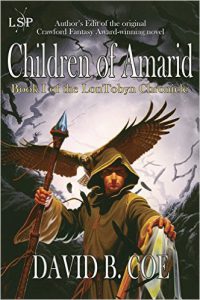 I did just that. I started with some short stories that have never since seen the light of day, but which helped me to shape the contours of my world and its history. Then I began work on the novel, and by September had completed the first five chapters of what would eventually be Children of Amarid, my first published novel. I gave the manuscript to a friend of the family who had been a publisher, and he agreed to act as my agent, operating under standard agenting fees. He sent those five chapters and an outline of the rest of the book to various fantasy publishers.
I did just that. I started with some short stories that have never since seen the light of day, but which helped me to shape the contours of my world and its history. Then I began work on the novel, and by September had completed the first five chapters of what would eventually be Children of Amarid, my first published novel. I gave the manuscript to a friend of the family who had been a publisher, and he agreed to act as my agent, operating under standard agenting fees. He sent those five chapters and an outline of the rest of the book to various fantasy publishers.
 February has begun, Punxsutawney Phil has done his schtick, and time seems to be moving at breakneck speed. In a little over two weeks, Invasives, the second Radiants book, will be released by Belle Books.
February has begun, Punxsutawney Phil has done his schtick, and time seems to be moving at breakneck speed. In a little over two weeks, Invasives, the second Radiants book, will be released by Belle Books.
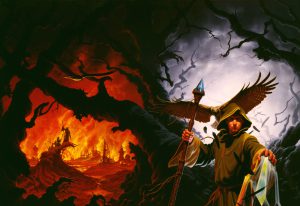 For the Thieftaker novels, Tor hired the incomparable
For the Thieftaker novels, Tor hired the incomparable 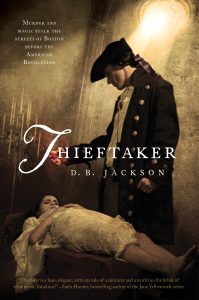 The thing to remember about artwork, though, is that it’s not enough for the covers to be eye-catching. They also need to tell a story — your story. The Thieftaker covers work because they convey the time period, they offer a suggestion of the mystery contained within, and they hint as well at magic, by always including that swirl of conjuring power in Ethan’s hand. The Islevale covers all have that golden timepiece in them, the chronofor, which enables my Walkers to move through time. All my traditional epic fantasy covers, from the LonTobyn books through the Forelands and Southlands series, convey a medieval fantasy vibe. Readers who see those books, even if they don’t know me or my work, will have an immediate sense of the stories contained within.
The thing to remember about artwork, though, is that it’s not enough for the covers to be eye-catching. They also need to tell a story — your story. The Thieftaker covers work because they convey the time period, they offer a suggestion of the mystery contained within, and they hint as well at magic, by always including that swirl of conjuring power in Ethan’s hand. The Islevale covers all have that golden timepiece in them, the chronofor, which enables my Walkers to move through time. All my traditional epic fantasy covers, from the LonTobyn books through the Forelands and Southlands series, convey a medieval fantasy vibe. Readers who see those books, even if they don’t know me or my work, will have an immediate sense of the stories contained within.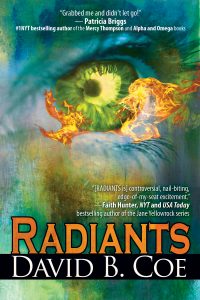 And that’s what we want. Sure, part of what makes that Invasives cover work is the simple fact that it’s stunning. The eye, the flames, the lighting in the tunnel. It’s a terrific image. But it also tells you there is a supernatural story within. And while the tunnel “setting” is unusual, the presence of train tracks, wires, electric wiring, and even that loudspeaker in the upper left quadrant of the tunnel, combine to tell you the story takes place in our world (or something very much like it). And for those who have seen the cover of the first book in the series, Radiants, the eye and flames mark this new book as part of the same franchise. That’s effective packaging.
And that’s what we want. Sure, part of what makes that Invasives cover work is the simple fact that it’s stunning. The eye, the flames, the lighting in the tunnel. It’s a terrific image. But it also tells you there is a supernatural story within. And while the tunnel “setting” is unusual, the presence of train tracks, wires, electric wiring, and even that loudspeaker in the upper left quadrant of the tunnel, combine to tell you the story takes place in our world (or something very much like it). And for those who have seen the cover of the first book in the series, Radiants, the eye and flames mark this new book as part of the same franchise. That’s effective packaging.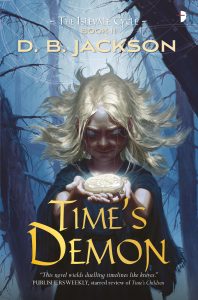 In the same vein, poor marketing practices by a publisher, even if inadvertent, can doom even the most beautiful book. I LOVE the art for Time’s Demon, the second Islevale novel. But the novel came out when the publisher was going through an intense reorganization. It got little or no marketing attention, and despite looking great and being in my view one of the best things I’ve written, it was pretty much the worst-selling book of my career.
In the same vein, poor marketing practices by a publisher, even if inadvertent, can doom even the most beautiful book. I LOVE the art for Time’s Demon, the second Islevale novel. But the novel came out when the publisher was going through an intense reorganization. It got little or no marketing attention, and despite looking great and being in my view one of the best things I’ve written, it was pretty much the worst-selling book of my career.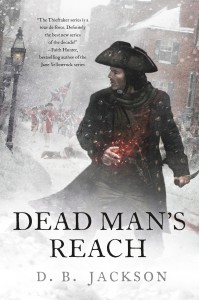 I discussed the Thieftaker books in last week’s post, and I mentioned how my love of U.S. history steered me toward setting the series in pre-Revolutionary Boston. But I failed to mention then that upon deciding to set the books in 1760s Boston, I then had to dive into literally months of research. Sure, I had read colonial era history for my Ph.D. exams, but I had never looked at the period the way I would need to in order to use it as a setting for a novel, much less several novels and more than a dozen pieces of short fiction. Ironically, as a fiction author I needed far more basic factual information about the city, about the time period, about the historical figures who would appear in my narratives, than I ever did as a doctoral candidate.
I discussed the Thieftaker books in last week’s post, and I mentioned how my love of U.S. history steered me toward setting the series in pre-Revolutionary Boston. But I failed to mention then that upon deciding to set the books in 1760s Boston, I then had to dive into literally months of research. Sure, I had read colonial era history for my Ph.D. exams, but I had never looked at the period the way I would need to in order to use it as a setting for a novel, much less several novels and more than a dozen pieces of short fiction. Ironically, as a fiction author I needed far more basic factual information about the city, about the time period, about the historical figures who would appear in my narratives, than I ever did as a doctoral candidate.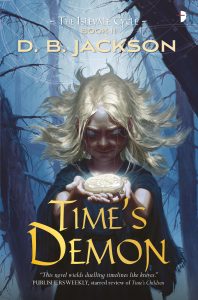 The same is true of the worlds I build from scratch for my novels. My most recent foray into wholesale world building was the prep work I did for my Islevale Cycle, the time travel/epic fantasy books I wrote a few years ago. As with my Thieftaker research, my world building for the Islevale trilogy consumed months. I began (as I do with my research) with a series of questions about the world, things I knew I had to work out before I could write the books. How did the various magicks work? What were the relationships among the various island nations? Where did my characters fit into these dynamics? Etc.
The same is true of the worlds I build from scratch for my novels. My most recent foray into wholesale world building was the prep work I did for my Islevale Cycle, the time travel/epic fantasy books I wrote a few years ago. As with my Thieftaker research, my world building for the Islevale trilogy consumed months. I began (as I do with my research) with a series of questions about the world, things I knew I had to work out before I could write the books. How did the various magicks work? What were the relationships among the various island nations? Where did my characters fit into these dynamics? Etc.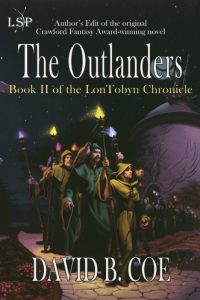 Favorite of My Books: The most recent one I’ve written, almost always. Which is a copout, I know. Invasives, the second Radiants book, comes out in February, so it is the most recent I’ve written, and it is my current favorite. But in another way, my favorite is probably The Outlanders, the second book in my LonTobyn Chronicle, and my second novel overall. Why? Simple. When I began my career, I knew I had one book in me, but I didn’t know if I could write for a living. Upon finishing The Outlanders, I realized it was better than my first book, Children of Amarid, a book of which I was quite proud. It was much better, in fact. And I understood then that I was not just a guy who wrote a book. I was an author. I could make a career of this.
Favorite of My Books: The most recent one I’ve written, almost always. Which is a copout, I know. Invasives, the second Radiants book, comes out in February, so it is the most recent I’ve written, and it is my current favorite. But in another way, my favorite is probably The Outlanders, the second book in my LonTobyn Chronicle, and my second novel overall. Why? Simple. When I began my career, I knew I had one book in me, but I didn’t know if I could write for a living. Upon finishing The Outlanders, I realized it was better than my first book, Children of Amarid, a book of which I was quite proud. It was much better, in fact. And I understood then that I was not just a guy who wrote a book. I was an author. I could make a career of this.